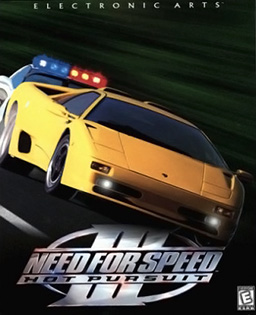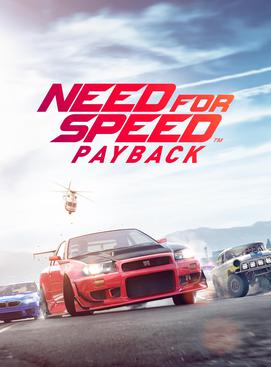The Complete History of Need for Speed: Evolution of a Racing Legend
The definitive guide to gaming's most iconic racing franchise
Introduction: The Legacy of Speed
Few video game franchises have managed to capture the thrill of high-speed racing like Electronic Arts' Need for Speed (NFS). Since its inception in 1994, this legendary series has evolved from a simple racing simulator to a cultural phenomenon that has defined and redefined the racing genre for nearly three decades. With over 25 main titles and more than 150 million copies sold worldwide, NFS stands as one of the most successful video game franchises of all time.
This article traces the complete journey of Need for Speed—from its humble beginnings to its current status as a racing game icon—exploring how each iteration pushed boundaries, introduced innovations, and kept millions of players coming back for more adrenaline-fueled action.
The Early Years (1994-1999): Foundation of a Legacy
The Need for Speed (1994)
The journey began in 1994 when Electronic Arts collaborated with Road & Track magazine to create an authentic racing experience. The original "The Need for Speed" for 3DO (later ported to PC, PlayStation, and Saturn) set itself apart with:
- Meticulously detailed car models
- Realistic driving physics
- Police pursuits (which would become a franchise staple)
- Head-to-head racing on scenic roads
This first entry featured exotic cars like the Ferrari 328 GTS, Lamborghini Diablo, and Porsche 911 Carrera. What made it special was the attention to detail—each vehicle had unique handling characteristics and dashboards based on their real-world counterparts.
Need for Speed II (1997)
Building on its predecessor's success, NFS II introduced showcase tracks with outlandish environments and a expanded roster of exotic supercars. The game shifted slightly from simulation toward more arcade-style gameplay while maintaining the series' focus on high-performance vehicles.
The "Showcase" mode allowed players to virtually explore detailed car models and specifications, cementing the franchise's reputation as a paradise for car enthusiasts.
Need for Speed III: Hot Pursuit (1998)
This third entry marked a significant evolution with the refined "Hot Pursuit" mode, which would become one of the series' most beloved features. Players could now either flee from police or play as law enforcement, chasing down speeders.
The game's success proved that the adrenaline rush of evading police pursuit was a gameplay element that resonated strongly with fans—a formula the series would return to repeatedly.
Need for Speed: High Stakes (1999)
High Stakes built upon Hot Pursuit's foundation by introducing a career mode with meaningful progression. The revolutionary "damage model" meant cars could be visually damaged during races, and repair costs came out of players' earnings. This added a risk-reward element to the gameplay loop that increased the stakes of each race.
The Golden Era (2000-2008): Defining Street Racing Culture
Need for Speed: Underground (2003)
After several entries that continued the exotic car racing formula, NFS underwent a radical transformation with Underground. Inspired by the street racing culture popularized by films like "The Fast and the Furious," Underground focused on:
- Urban nighttime racing
- Extensive car customization
- Tuner cars rather than exotic supercars
- A hip-hop and electronic soundtrack
This pivot proved enormously successful, selling over 15 million copies and introducing the series to a new generation of gamers. The customization system allowed players to modify everything from body kits and spoilers to neon underlighting and performance upgrades.
Need for Speed: Underground 2 (2004)
Underground 2 expanded on its predecessor's formula with an open-world city, more extensive customization options, and a broader range of event types. The game's free-roaming environment let players discover races organically, visit shops to upgrade their vehicles, and immerse themselves in a living urban world.
Many fans still consider Underground 2 to be the pinnacle of the franchise, with its perfect balance of customization, racing, and progression.
Need for Speed: Most Wanted (2005)
Most Wanted brilliantly combined Underground's street racing aesthetics with the return of police pursuits in an open world. The game introduced the "Blacklist"—15 increasingly challenging rivals that players needed to defeat to progress.
The heat system, where police pursuits became more aggressive as players committed more infractions, created some of gaming's most intense chase sequences. The iconic BMW M3 GTR featured on the cover became synonymous with the franchise.
Need for Speed: Carbon (2006)
Carbon served as a direct sequel to Most Wanted, introducing canyon duels and a crew system where AI teammates could assist during races. The game featured territory control mechanics where winning races allowed players to claim neighborhoods.
Need for Speed: ProStreet (2007)
ProStreet marked a temporary departure from illegal street racing, focusing instead on sanctioned track events and a more simulation-oriented driving model. While divisive among fans who preferred the Underground era's style, it showcased the series' willingness to experiment.
Need for Speed: Undercover (2008)
Attempting to recapture the magic of Most Wanted, Undercover placed players in the role of an undercover cop infiltrating a street racing gang. Despite its ambitious story and open world, technical issues and repetitive gameplay made it one of the series' more disappointing entries.
Era of Reinvention (2009-2015): Finding New Directions
Need for Speed: Shift (2009)
Shift represented another major directional change, focusing on professional circuit racing with simulation-heavy physics. Developed by Slightly Mad Studios, it included an innovative cockpit view with dynamic camera effects that simulated g-forces and impacts.
Need for Speed: Hot Pursuit (2010)
Criterion Games (creators of the Burnout series) took over development with this reboot of the Hot Pursuit concept. The game featured Autolog, a revolutionary social system that automatically compared players' times with friends, creating natural rivalries and reasons to replay races.
Hot Pursuit won numerous awards for its polished gameplay, stunning visuals, and perfect balance between arcade accessibility and challenging depth.
Need for Speed: The Run (2011)
The Run took a story-driven approach with a cross-country race from San Francisco to New York. It introduced on-foot quick-time events between driving segments—an experiment that received mixed reactions from fans.
Need for Speed: Most Wanted (2012)
Another Criterion-developed title, this Most Wanted reimagining combined open-world exploration with an "everything unlocked from the start" approach. Players could find premium cars parked throughout the city, then compete to climb the Most Wanted list.
Need for Speed Rivals (2013)
Rivals refined the cops vs. racers formula with the AllDrive system that seamlessly blended single-player and multiplayer experiences. Players could transition between solo play and encounters with others without loading screens.
Need for Speed (2015)
The 2015 reboot attempted to return to the Underground era's street racing roots with a heavy focus on car culture, customization, and night racing. It featured live-action cutscenes with real-world car culture icons but required a constant internet connection, which proved controversial.
Modern Era (2017-Present): Balancing Tradition and Innovation
Need for Speed Payback (2017)
Payback introduced a heist-themed narrative following three playable characters seeking revenge against a cartel. The game featured a controversial upgrade system tied to randomized "Speed Cards," which many players criticized as pushing microtransactions.
Need for Speed Heat (2019)
Heat represented a successful return to form by combining day and night racing with distinct gameplay focuses. Daytime featured sanctioned racing events for earning money, while nighttime offered illegal street races for reputation points—with increasingly aggressive police presence as players' "heat" levels rose.
The game's Miami-inspired Palm City setting and engaging risk-reward systems earned back goodwill from longtime fans.
Need for Speed Unbound (2022)
The most recent mainline entry, Unbound, took a bold artistic direction with anime-inspired visual effects and graffiti aesthetics combined with photorealistic cars. Set in a fictionalized Chicago called Lakeshore City, it focused on street racing and police pursuits while introducing new social elements.
The Cultural Impact of Need for Speed
Beyond just being a successful game series, Need for Speed has had a profound cultural impact:
Film Adaptation
In 2014, "Need for Speed" became a major motion picture starring Aaron Paul, demonstrating the brand's recognition value beyond gaming.
Car Culture Influence
The games—particularly the Underground series—helped popularize car modification culture and introduced many young people to automotive enthusiasm. Numerous real-world cars have seen increased popularity after being featured prominently in NFS games.
Music and Soundtrack Innovation
NFS games have consistently featured cutting-edge soundtracks that introduced players to new artists and genres. From EA's original rock tracks in the early games to the nu-metal and electronica of the Underground era to modern hip-hop and EDM, the series has always had its finger on the pulse of contemporary music.
Racing Game Evolution
Features pioneered or popularized by Need for Speed—like extensive vehicle customization, open-world environments, and social competition systems—have become industry standards, influencing countless other racing games.
Gameplay Evolution Through the Years
Physics and Handling Models
The series has oscillated between arcade accessibility and simulation depth, often finding different balances to appeal to various audiences:
- Early games (1994-1999): Semi-simulation with realistic handling
- Underground era (2003-2006): Arcade-style physics with drift focus
- Shift games: Return to simulation-oriented gameplay
- Recent titles: Accessible arcade physics with optional driving assists
Progression Systems
NFS has experimented with numerous progression mechanics:
- Car unlocks based on winning races
- Money-based economies for purchasing upgrades
- Reputation systems
- Car level systems
- Card-based performance upgrades
Visual Customization
What began as simple color selections evolved into the industry's most comprehensive customization suite:
- Body kits and aftermarket parts
- Vinyl editors and decal systems
- Interior customization
- Exhaust note tuning
- Stance adjustments
Police AI and Chase Mechanics
Police pursuits have evolved dramatically:
- Basic speed traps in the original game
- Coordinated roadblocks and spike strips
- EMP devices and helicopters
- Heat systems that escalate pursuit intensity
The Future of Need for Speed
With over 25 years of history behind it, Need for Speed continues to evolve. While each new release inevitably draws comparisons to fan-favorite entries like Underground 2 and Most Wanted (2005), the series remains committed to delivering high-octane racing experiences that balance nostalgia with innovation.
Future titles will likely continue exploring the balance between:
- Open-world exploration vs. focused racing
- Realistic graphics vs. stylized visuals
- Arcade accessibility vs. simulation depth
- Car culture authenticity vs. action-movie excitement
Conclusion: A Legacy in Motion
Few gaming franchises have demonstrated the longevity and adaptability of Need for Speed. From pioneering 3D racing on early consoles to defining street racing culture in games to pushing the boundaries of online competition, NFS has consistently remained relevant by evolving alongside gaming technology and car culture.
Whether you're a longtime fan who cut your teeth on the original 3DO release or a newcomer drawn in by the latest entry's flashy visuals, the Need for Speed series offers something for every racing enthusiast. As we look toward the future, one thing remains certain: the need for speed never fades.
What's your favorite Need for Speed game? Let me know in the comments below!



















